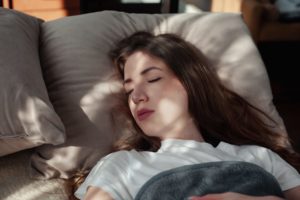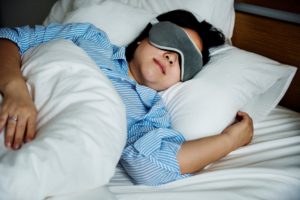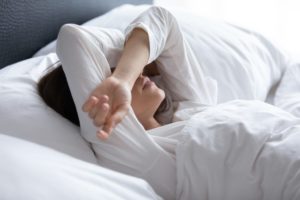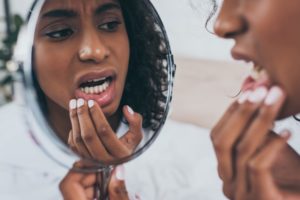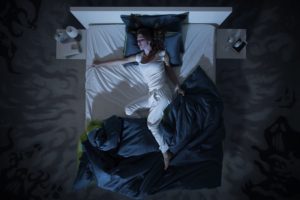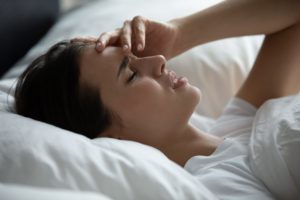How Long Do Dreams Last?
- The average person spends about two hours dreaming each night.
- Multiple dreams can occur throughout the night and across the sleep stages.
- The most vivid and more easily remembered dreams typically occur during REM sleep.
- There are several theories as to why dreams often seem longer than they really are.
For centuries, dreams have been a source of fascination. Dreams can evoke deep emotions like wonder, joy, or confusion, and at times they can spark inspiration. Although dream science has significantly advanced within the past couple of decades , there is still much to uncover about why we dream. Fortunately, experts have started to unravel essential details that shed light on how dreams work.
How Long Do We Dream Each Night?
Researchers estimate that the average person spends about two hours dreaming each night. REM sleep periods early in the night generally last about 10 minutes and gradually increase in length throughout the night to a maximum of about one hour. However, it is difficult to say whether these times correspond with the actual length of dreams, especially since not all dreams occur during REM sleep.
Dream content research relies on self-reported information , which can be unreliable. Also, not all people remember their dreams after waking. This memory gap makes it challenging for researchers to accurately estimate the duration of each dream, or deduce whether the perceived length of a dream matches how long the dream actually lasted.
Evidence suggests that eye movements during REM sleep or certain brain wave patterns might correspond to dreamed experiences. If this were true, it would make it easier to measure dream length. Another promising method is via lucid dreaming, in which the sleeper becomes aware they are in the dream and may gain control over their dream actions. Lucid dreamers are sometimes able to time-stamp their dreams by making certain eye movements , but experts are not sure if the information can be generalized to non-lucid dreamers.
Older studies found that when given a choice between two answers, most people were able to accurately say how long their dreams had lasted. Subsequent studies also found that dream time seemed to be equivalent to real time. There may be exceptions, however. Researchers have found that bizarre dreams might appear to last longer than they really do, and lucid dreamers sometimes take longer to complete tasks in dreams versus real life.
Why Do Dreams Seem to Last So Long?
Study authors have proposed several theories to explain why dreams often seem longer than they really are. One theory is that brain activity might be slower in REM sleep compared with waking life because the brain is at a lower temperature. Thus, dream scenery would progress at a slower pace for the dreamer.
Another possibility is that although most muscles are paralyzed during REM sleep, the brain knows that certain actions should require more effort than others. Because there is no feedback from the muscles, the brain simulates physical effort by assigning more time to actions it considers tiring. In support of this theory, one study found that lucid dreamers took proportionally longer to do squats than to do a simple counting exercise. However, results are conflicted and more research is needed.
What Determines Dream Length?
Research suggests that REM dreams are longer than NREM dreams. They are also more likely to be bizarre, emotional, and story-like. Dreams from NREM sleep may be less detailed and more similar to disjointed thoughts , although there are exceptions.
Within the same night, dream reports tend to be more detailed later in the night. In one study, researchers woke participants after five or 10 minutes of REM sleep , both early on and later in the night. The longest, most complex dream stories occurred after 10 minutes of REM sleep later in the night, when some people also reported having dreams divided into various episodes.
How Many Dreams Do We Have a Night?
People have multiple dreams throughout the night. Sleep in humans consists of four sleep stages: rapid eye movement (REM) sleep, and three non-rapid eye movement (NREM) sleep stages. Dreams can happen in any sleep stage.
It is a popular misconception that dreams only occur during REM sleep. Researchers originally linked this sleep stage to dreaming because of the characteristic eye movements that occur during this stage. However, more recent studies have found that participants woken from NREM sleep report dreams more than 50% of the time. That said, it does appear that vivid dreams are most likely to occur during REM sleep.
During a normal night of sleep, people cycle repeatedly through all four sleep stages. A full cycle takes approximately 90 minutes , so in a typical night, most people experience four to six periods of REM sleep. People generally spend more time in deep sleep at the beginning of the night and more time in REM toward the end.
Does Everyone Dream?
Just like how everyone sleeps, dreams are a nearly universal experience. Some people claim not to have dreams , though it is difficult for scientists to determine if these claims result from poor dream recall or a physiological inability to dream. Brain damage to the parietal lobe can cause failure to form dreams.
Dream reports in young children appear to mature in line with their memory and sense of self. As they age, many older adults spend less time in REM sleep. They also report more difficulty remembering dreams.
The dreams of people with blindness may involve a higher proportion of sounds, smells, tastes, or touch as opposed to visual elements.
How Can I Remember My Dreams?
Evidence suggests that keeping a dream log could help with dream recall . Since dreams can be difficult to remember after some time has passed, it is best to write down or voice-record all remembered details right after waking up.
Current research indicates that the brain partly suppresses its ability to form new memories during sleep. Waking up more frequently during sleep might provide an opportunity for dreams to be transferred to more stable memory storage .
References
16 Sources
-
Scarpelli, S., Alfonsi, V., Gorgoni, M., Giannini, A. M., & De Gennaro, L. (2021). Investigation on neurobiological mechanisms of dreaming in the new decade. Brain Sciences, 11(2), 220.
https://pubmed.ncbi.nlm.nih.gov/33670180/ -
Mangiaruga, A., Scarpelli, S., Bartolacci, C., & De Gennaro, L. (2018). Spotlight on dream recall: the ages of dreams. Nature and science of sleep, 10, 1–12.
https://pubmed.ncbi.nlm.nih.gov/29391838/ -
Erlacher, D., Schädlich, M., Stumbrys, T., & Schredl, M. (2014). Time for actions in lucid dreams: Effects of task modality, length, and complexity. Frontiers in Psychology, 4, 1013.
https://pubmed.ncbi.nlm.nih.gov/24474942/ -
Leclair-Visonneau, L., Oudiette, D., Gaymard, B., Leu-Semenescu, S., & Arnulf, I. (2010). Do the eyes scan dream images during rapid eye movement sleep? Evidence from the rapid eye movement sleep behaviour disorder model. Brain: A Journal of Neurology, 133(6), 1737–1746.
https://pubmed.ncbi.nlm.nih.gov/20478849/ -
Konkoly, K. R., Appel, K., Chabani, E., Mangiaruga, A., Gott, J., Mallett, R., Caughran, B., Witkowski, S., Whitmore, N. W., Mazurek, C. Y., Berent, J. B., Weber, F. D., Türker, B., Leu-Semenescu, S., Maranci, J. B., Pipa, G., Arnulf, I., Oudiette, D., Dresler, M., & Paller, K. A. (2021). Real-time dialogue between experimenters and dreamers during REM sleep. Current Biology, 31(7), 1417–1427.e6.
https://pubmed.ncbi.nlm.nih.gov/33607035/ -
Scarpelli, S., Bartolacci, C., D’Atri, A., Gorgoni, M., & De Gennaro, L. (2019). Mental sleep activity and disturbing dreams in the lifespan. International Journal of Environmental Research and Public Health, 16(19), 3658.
https://pubmed.ncbi.nlm.nih.gov/31569467/ -
Martin, J. M., Andriano, D. W., Mota, N. B., Mota-Rolim, S. A., Araújo, J. F., Solms, M., & Ribeiro, S. (2020). Structural differences between REM and non-REM dream reports assessed by graph analysis. PLOS ONE, 15(7), Article e0228903.
https://pubmed.ncbi.nlm.nih.gov/32701992/ -
Scarpelli, S., D’Atri, A., Gorgoni, M., Ferrara, M., & De Gennaro, L. (2015). EEG oscillations during sleep and dream recall: State- or trait-like individual differences? Frontiers in Psychology, 6, 605.
https://pubmed.ncbi.nlm.nih.gov/25999908/ -
Cipolli, C., Guazzelli, M., Bellucci, C., Mazzetti, M., Palagini, L., Rosenlicht, N., & Feinberg, I. (2014). Time-of-night variations in the story-like organization of dream experience developed during rapid eye movement sleep. Journal of Sleep Research, 24(2), 234–240.
https://pubmed.ncbi.nlm.nih.gov/25307048/ -
Vallat, R., Eichenlaub, J. B., Nicolas, A., & Ruby, P. (2018). Dream recall frequency is associated with medial prefrontal cortex white-matter density. Frontiers in Psychology, 9, 1856.
https://pubmed.ncbi.nlm.nih.gov/30319519/ -
Nieminen, J. O., Gosseries, O., Massimini, M., Saad, E., Sheldon, A. D., Boly, M., Siclari, F., Postle, B. R., & Tononi, G. (2016). Consciousness and cortical responsiveness: A within-state study during non-rapid eye movement sleep. Scientific Reports, 6, 30932.
https://pubmed.ncbi.nlm.nih.gov/27491799/ -
Patel, A. K., Reddy V., Araujo J. F. (2019, March). Physiology, sleep stages. StatPearls.
https://pubmed.ncbi.nlm.nih.gov/30252388/ -
Siegel, J. M. (2011). REM sleep: A biological and psychological paradox. Sleep Medicine Reviews, 15(3), 139–142.
https://pubmed.ncbi.nlm.nih.gov/21482156/ -
Christensen, J. A. E., Aubin, S., Nielsen, T., Ptito, M., Kupers, R., & Jennum, P. (2019). Rapid eye movements are reduced in blind individuals. Journal of Sleep Research, 28(6), e12866.
https://pubmed.ncbi.nlm.nih.gov/31025801/ -
Aspy, D. J., Delfabbro, P., & Proeve, M. (2015). Is dream recall underestimated by retrospective measures and enhanced by keeping a logbook? A review. Consciousness and Cognition, 33, 364–374.
https://pubmed.ncbi.nlm.nih.gov/25725324/ -
van Wyk, M., Solms, M., & Lipinska, G. (2019). Increased awakenings from non-rapid eye movement sleep explain differences in dream recall frequency in healthy individuals. Frontiers in Human Neuroscience, 13, 370.
https://pubmed.ncbi.nlm.nih.gov/31680920/


